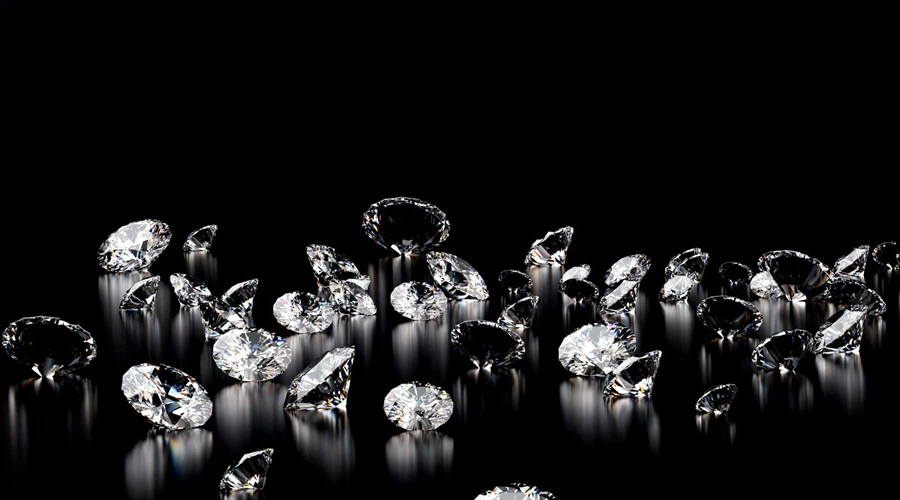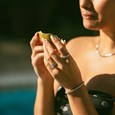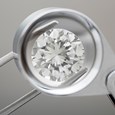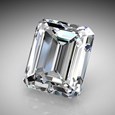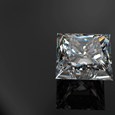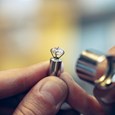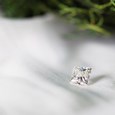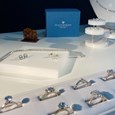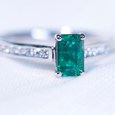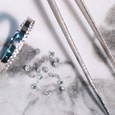Sign up for our Newsletter
Diamonds 101
March 04 2022
Recently, we took a poll on our Instagram story asking our followers if they know much about Diamonds - 61% of the results said that it’s confusing! So we decided to write a blog on the basic information about diamonds to help them.
Rough Diamonds - What are they:
These are diamonds that are still in their natural state, meaning they haven’t been cut or polished and look much like ice cubes before they are cut into the shapes used in jewellery! Only 20% of all rough diamonds are suitable for gem cutting, the remaining are used for industrial tools, for drilling, cutting, grinding and polishing. Once cut, they take on the familiar shapes we recognise in jewellery, containing unique visual properties like an extremely high index of refraction, high dispersion and stunning white colour, which gives the unique “fire” and “sparkle” we associate with diamonds.
Natural Diamonds - How are they made:
Diamonds need immense pressure, combined with temperatures in excess of 2000 degrees in order to be formed and are created around 90 miles beneath the surface, within the Earth’s Mantle. They consist of pure carbon and every carbon atom of a diamond is bounded by another four carbon atoms: making it one of the most durable and hardest substances known to man.
Quality Diamonds offer a vast selection of natural diamonds, all ethically sourced and independently certified.
Lab-Grown Diamonds - How are they made:
Over the past 50 years, a method has been created to grow diamonds in a lab under the same conditions that they are formed naturally. They began making them for commercial tools, but over time, the size and quality have reached a level where they can be used for jewellery. Lab-grown diamonds are indistinguishable from natural diamonds and can only be identified in laboratory tests.
Quality Diamonds also offer lab-grown diamonds, for customers concerned with the environmental impact of mined diamonds. Learn more about our Lab-grown diamonds, here.
The 4 C’s:
The quality of a diamond is measured by the 4C's, Carat weight, Clarity, Colour and Cut Grade.
- Colour varies from clear (commonly referred to as white) to yellow to brown. Colourless diamonds receive higher grades and are generally of the highest value. Find out more about Colour Grade, here.
- Carat weight is the weight of the diamond and it gives you a rough idea of the size of that diamond. Generally speaking, the higher the carat weight, the rarer the diamond! Find out more about Carat Weight here.
- Clarity refers to the number, size and location of all inclusions and blemishes: these are the small imperfections a diamond may have. The higher the clarity grade, the fewer imperfections there are on a diamond. Find out more about Clarity Grades here.
- Cut refers to the quality and precision of the cuts used to create a diamond’s facets, it measures how well a diamond reflects light and generates sparkles. Find out more on Cut Grades here.
Coloured Diamonds:
These contain impurities within the chemical composition and different impurities will cause different colours to form within the structure of the diamond. The more impurities, the more intense the colour.
Nitrogen is the most common impurity and causes the yellow colour in a diamond. Boron, a rare element in the earth’s crust will create a blue diamond. Other colours like green, purple and orange occur from natural radiation.
Also, it’s possible to artificially enhance the colour of a diamond by irradiating or heat-treating the diamond. Quality Diamonds do not sell artificially enhanced diamonds.
Diamond Shapes:
The ten main diamond shapes are available to purchase at Quality Diamonds, these include; Round, Princess, Cushion, Emerald, Heart, Pear, Oval, Radiant, Marquise and Asscher. Other shapes are available, upon request. To find out which diamond shape suits your personality, click here.
Find us on Instagram @qualitydiamonds
If you wish to contact us, click here.
-
Ethically Sourced Diamonds
-
Handmade in the UK
-
FREE Shipping Worldwide
-
60 Day Returns

